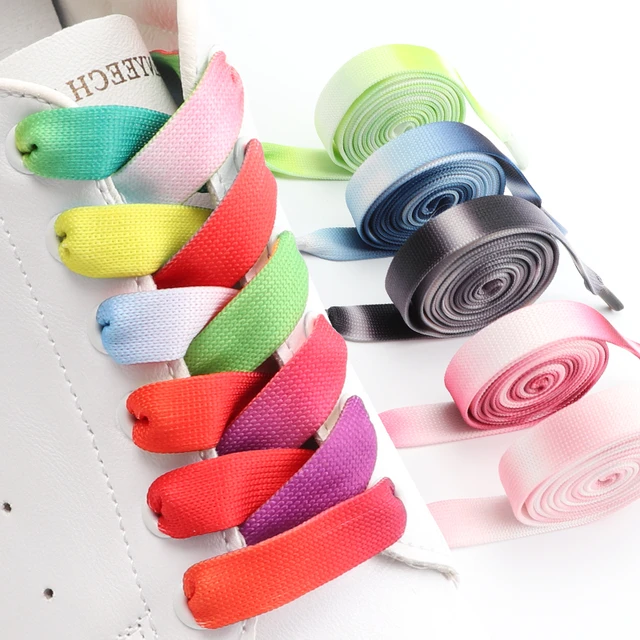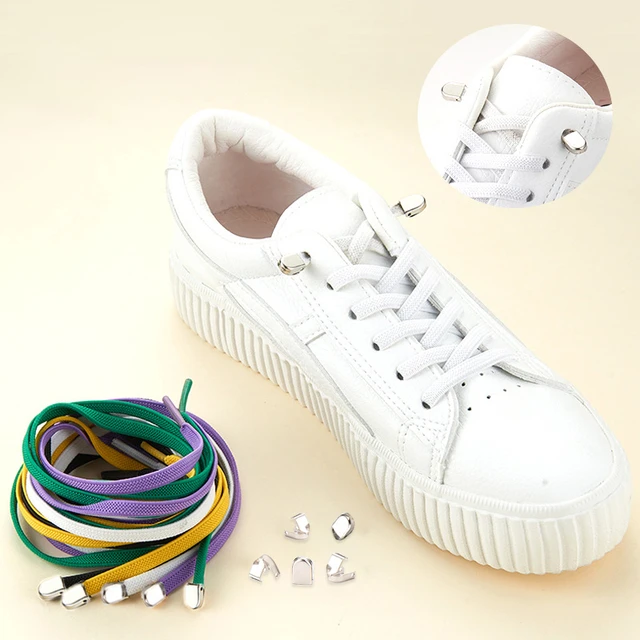Shoelaces may seem like a minor part of our footwear, but they play a critical role in ensuring a secure fit and supporting overall comfort. However, for many people, the ongoing battle with shoelaces that are too long can become a source of frustration. This article explores the reasons behind long shoelaces, various solutions to manage them effectively, and creative ideas to tackle the problem.
Why Are Shoelaces Too Long?
Manufacturing Choices
One of the primary reasons shoelaces may be excessively long is the inconsistency in manufacturing processes. Different brands and models of shoes often come with various shoelace lengths. While some may prefer longer laces for versatility, others may find them cumbersome and annoying.
Shoe Design Variability
Certain shoe designs necessitate longer laces. For example, high-top sneakers typically require longer laces due to the additional eyelets. Conversely, slip-ons and casual shoes may only need shorter laces, making them ill-suited for longer shoelaces.
Personal Preference
Personal preference plays an important role in shoelace length as well. Some people like to double knot their laces for added security, while others prefer a looser fit. Ultimately, what’s considered ‘too long’ varies from person to person.
The Consequences of Long Shoelaces
Tripping Hazards
One of the most significant inconveniences of long shoelaces is their potential to cause trips and falls. Excess length can lead to the laces dragging on the ground, especially when walking in crowded places or engaging in physical activities.
Aesthetic Issues
Long shoelaces can also detract from the overall appearance of shoes. They can appear messy and unkempt, leaving a negative impression. Well-tied shoes look polished and curated, which contributes to a coherent fashion statement.
Wear and Tear
Excessively long shoelaces are prone to fraying and wearing down faster than shorter ones—particularly if they’re dragging on the ground. This not only necessitates the purchase of new laces but may also lead to a decline in overall shoe quality.
Solutions for Managing Long Shoelaces
There are various methods to handle shoelaces that are too long, ranging from practical adjustments to creative solutions.
1. Cutting and Replacing Shoelaces
Assessing the Length
Before making any drastic changes, assess the current length of your shoelaces. If they are hanging down excessively, you might want to cut them to a more appropriate size.
Tools Required
You will need a pair of scissors, a lighter or candle, and possibly a needle and thread if you want to sew the ends.
Cutting
Once you’ve determined the desired length, carefully cut the shoelaces to that size. It’s crucial to do this in small increments, as cutting too much can lead to an irreversible error.
Sealing the Ends
After cutting, use a lighter or candle to melt the ends of the shoelaces slightly to prevent fraying. This will help them last longer and maintain their appearance.
2. Creative Knotting Techniques
If you prefer to keep your shoelaces long but want to manage the excess, you can employ various knotting techniques to secure them more effectively.
The Bunny Ears Knot
One of the simplest methods is to utilize the bunny ears technique, where you make two loops (or ‘bunny ears’) and tie them together. This method keeps the shoelaces secure without requiring excessive length.
The Double Knot
Another option is the double knot. This technique involves making a regular knot and then tying another knot with the loops. It can help keep long laces from trailing on the ground.
3. Lace Anchors
What Are Lace Anchors?
Lace anchors are small devices designed to keep shoelaces in place, especially for those with longer laces. They can be attached to the inside of your shoes, helping to secure the laces and eliminate excess length.
How to Use Lace Anchors
Simply position the anchors on the shoe’s tongue where you want the laces to rest, then thread the laces through them. This can greatly reduce the likelihood of tripping and can improve aesthetics.
4. Lace Management Systems
Specialized Products
Various products are on the market designed specifically for managing shoelaces. These can include lace locks, elastic laces, and other innovative designs that allow for easier adjustments.
Benefits
Using a lace management system not only handles the length issue efficiently but can also enhance the performance of your footwear, particularly for athletes.
5. Tucking Laces
Tucking Method
Another straightforward solution is simply tucking the excess length of the shoelaces into the shoe itself. This is particularly effective for longer styles like boots or high-tops.
Execution
After lacing your shoes, simply fold the excess laces and tuck them into the sides of the shoe, effectively hiding any extra length while keeping the aesthetic clean.
Fashion and Style Considerations
1. Laces as a Fashion Statement
Funky, colorful shoelaces have gained traction as a fashion accessory. If your shoelaces are too long and you like their style, consider using them as a statement piece rather than hiding them away.
2. Coordinate Color with Outfits
Choose shoelaces that complement or contrast your clothing. Longer laces can be looped and styled to be a focal point in your outfit, showcasing your creativity and personal style.
3. Experimenting with Patterns
Utilizing patterned laces can also draw attention away from their length. By experimenting with different colors and patterns, you can make a unique statement while managing the length issue.
 Practical Examples of Shoe Lacing Techniques
Practical Examples of Shoe Lacing Techniques
1. The Criss-Cross Lacing
Overview
Criss-cross lacing is the most traditional and widely used shoelacing technique. It provides a balanced and secure fit, ensuring that your footwear remains snug throughout the day.
How to Do It
Simply cross the laces over one another, weaving them through the eyelets until you reach the top. If your laces are too long, you can consider starting the lacing process from a different hole to create a shorter fit.
2. The Ladder Lacing
Overview
Ladder lacing offers even pressure distribution and is ideal for long laces. This technique may not only help manage length but also provides a unique visual appeal.
Instructions
To execute ladder lacing, thread the laces through the bottom set of eyelets and then move diagonally to the second on the opposite side. Continue this pattern all the way up the shoe.
3. The Straight Lacing
Overview
Straight lacing (or lacing for aesthetics) creates a clean profile and is often used for dress shoes or casual sneakers.
Procedure
The laces lay flat across the shoe, with the end portions tucked neatly underneath the straight section.
Long-Lasting Solutions: Choosing the Right Laces
Material Consideration
When selecting new shoelaces, consider materials that are durable and less likely to fray. Cotton, polyester, and nylon each offer different benefits, so choose based on your lifestyle and needs.
Thickness and Texture
If your shoelaces are too long because they’re thin and easily pulled through the eyelets, it’s worth considering thicker alternatives that stay in place better.
Length Options
Manufacturers often provide a size chart to help you choose the correct length based on your shoe model. Measure your current laces and refer to these charts for the appropriate fit.
Conclusion
Dealing with shoelaces that are too long doesn’t need to be a hassle. With a variety of techniques, creative solutions, and practical tools at your fingertips, you can manage shoelaces too long with ease. Whether you choose to trim them to the perfect length, use inventive knotting methods, or simply tuck them away, your shoes can maintain a neat and fashionable appearance.
Additionally, selecting the right shoelaces can enhance your overall look. Whether you prefer them to stand out or to blend seamlessly with your footwear, the possibilities are endless. By taking into account your personal style, comfort, and functional needs, you can effortlessly tackle the issue of shoelaces that are too long.

